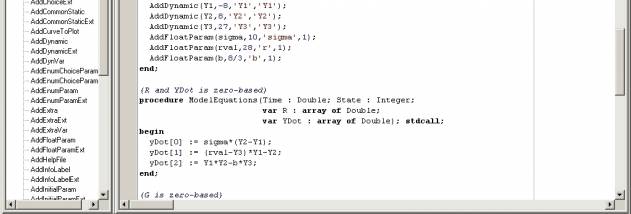

btnCloseClick ( Sender : TObject ) begin Close end procedure TMainForm. btnClose := CreateButton ( self, Width - 90, Height - 35, 75, 'Quit', btnCloseClick ) btnClose. AfterCreate begin SetPosition ( 100, 100, 700, 500 ) WindowTitle := 'fpGUI Standard Image Listing' // Place button in bottom right corner. On the canvas (background) of the window it paints all the standard built-in images used with fpGUI.

The following program shows a single window with a "Quit" button in the bottom right. GUI toolkits that follow the opposite design are toolkits like the latest Qt and MSEgui. Other GUI toolkits that follow a similar design are GTK, Xt and FLTK to name a few. One of the major changes was that all widgets were now based on a multi-handle (windowed) design.
#FREE PASCAL BUTTON CODE#
The code base ended up being much simpler with a cleaner design. Past experience helped a lot and new design ideas were implemented. After numerous prototypes the fpGUI project was completely rewritten. This prevented fpGUI from being truly useful in real applications.
#FREE PASCAL BUTTON MAC OS X#
Felipe also started working on Mac OS X support via Carbon.Īt the beginning of June 2007 Graeme found some major design issues in the source base. After a few months Felipe Monteiro de Carvalho joined the development team adding support for Windows Mobile devices and extending the graphics support and design.

The supported platforms at that stage was Linux and FreeBSD via X11 and Microsoft Windows via GDI. Graeme extended the number of components and amount of backend graphics layer, and improved the overall toolkit. Merging three sub-projects (fpGFX, fpIMG and fpGUI) into a single project fpGUI. He continued developing the toolkit for the next year. Graeme Geldenhuys revived the toolkit in mid-2006 where Sebastian left off. Most of these tools where migrated to the maturing Lazarus in the 2004-2006 timeframe. the fpdoc editor), but there were still a lot of things outstanding before the toolkit could be truly useful and used in real life applications by end-users. The toolkit was used for some internal FPC tooling (e.g. fpGUI was a successor to an earlier OO GTK wrapper, fpGTK, and was pretty much a fresh start to allow multiple (backend) widgetsets, most notably win32. The first version of fpGUI was written by Sebastian Günther back in 2000.


 0 kommentar(er)
0 kommentar(er)
